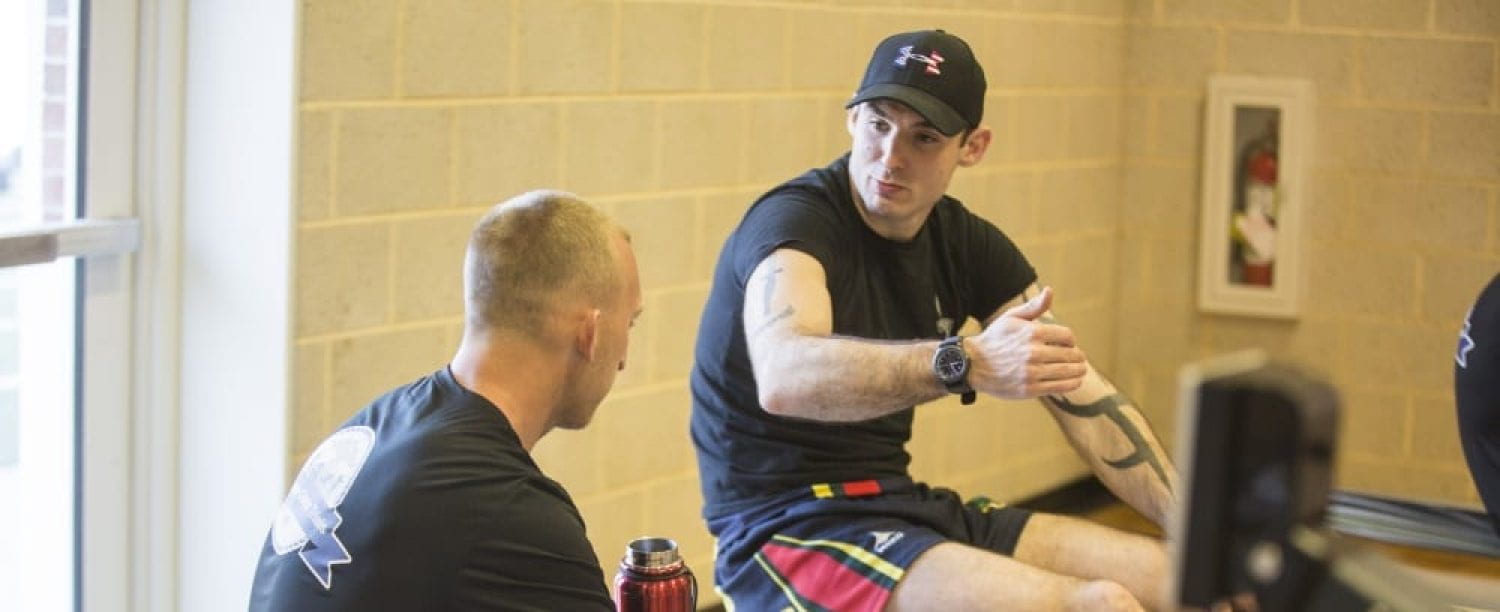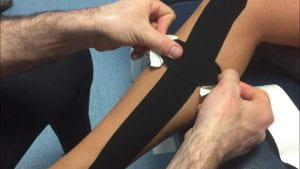Medial tibial stress syndrome (Tibialis posterior).
The client’s skin was cleaned and with the client’s permission the leg was shaved around where the pain was present, to make the tape stick more effectively to the skin. The client was asked if they were had any allergies to the adhesive of the tape. The tape was measured out along the leg taking into consideration the stretching properties of the tape. The tape was cut and rounded off at the edges (“Sidelined With Shin Splints? Kinesiology Tape Could Speed Up Your Recovery”, 2019).
Step-by-step process of application
- Tibialis posterior action is to invert and assist in plantar flexion of the foot, so the client’s foot was put into dorsi and eversion to stretch the muscle.
- The back of the tape was ripped in the middle and the end was put on the medial side of the foot on the navicular tuberosity.
- The tape was stretched to around 10 percent and the tape was placed posteriorly around the medial malleolus, up the medial side of the tibia across the area of pain.
- The back of the tape was used to rub the tape to heat activate it.
- The second piece of tape was used as an anchor and put on the medial side, going across the other piece of tape on the spot of pain. This was stretched to 100 percent and reduced to 75 percent when applied. The back of the tape was rubbed onto the tape to heat activate the tape. Gibbons (2014).
The tape was put on the affected area but it could have been cut a little shorter. By applying KT to medial tibial stress syndrome it can reduce the rate of medial loading (Griebert, Needle, McConnell & Kaminski, 2016).

